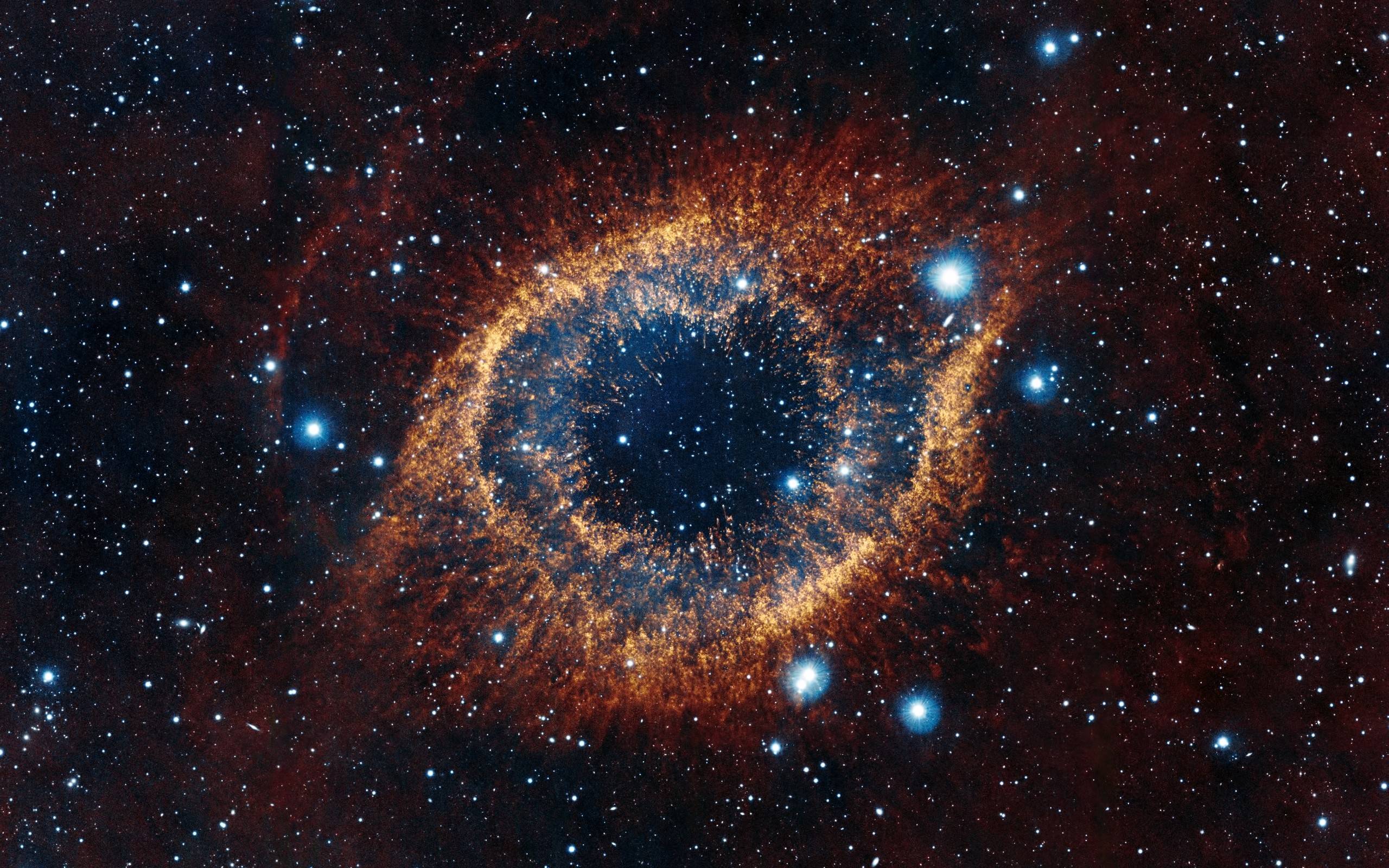A different astronomy and space science related image is featured each day, along with a brief explanation. Astronomy Picture of the Day. Discover the cosmos! Each day a different image. Definition of astronomy: Astronomy is the study of the sun, moon, stars, planets, comets, gas, galaxies, gas, dust and other non-Earthly bodies and phenomena. In curriculum for K-4 students, NASA. Astronomy is the scientific study of celestial objects (such as stars, planets, comets, and galaxies) and phenomena that originate outside the Earth's atmosphere (such as the cosmic background.

2
Magnetic Waves Explain Mystery of Sun's Outer Layer
Solar System Formation in Two Steps
Search for Axions from Nearby Star Betelgeuse Comes Up Empty
Saturn's Moon Titan: Largest Sea Is 1,000-Feet Deep
Testing the Waters: Analyzing Different Solid States of Water on Other Planets and Moons
Exploring the Solar Wind With a New View of Small Sun Structures
Astronomers Dissect the Anatomy of Planetary Nebulae Using Hubble Space Telescope Images
Cosmic Beasts and Where to Find Them
Researchers Rewind the Clock to Calculate Age and Site of Supernova Blast
X-Rays Surrounding 'Magnificent 7' May Be Traces of Sought-After Particle
Galaxies Hit Single, Doubles, and Triple (Growing Black Holes)
Mapping Our Sun's Backyard
Giant Map of the Sky Sets Stage for Ambitious DESI Survey
Doubling the Number of Known Gravitational Lenses
Burst of Light April 15, 2020 Likely Magnetar Eruption in Nearby Galaxy
Could We Harness Energy from Black Holes?
Quasar Discovery Sets New Distance Record
An 'Old Faithful' Active Galaxy: Black Hole Rips Away at Star

Chandra X-Ray Observatory Studies Extraordinary Magnetar
Striped or Spotted? Winds and Jet Streams Found on the Closest Brown Dwarf
Astronomers Agree: Universe Is Nearly 14 Billion Years Old
A Blazar in the Early Universe
Key Clues to Understanding the Death of Stars
How Nearby Galaxies Form Their Stars
Multi-Messenger Astronomy Offers New Estimates of Neutron Star Size and Universe Expansion
- Galaxies Hit Single, Doubles, and Triple (Growing Black Holes)
- Mapping Our Sun's Backyard
- Giant Map of the Sky Sets Stage for Ambitious DESI Survey
- Doubling the Number of Known Gravitational Lenses
- Burst of Light April 15, 2020 Likely Magnetar Eruption in Nearby Galaxy
- Could We Harness Energy from Black Holes?

- Quasar Discovery Sets New Distance Record
- An 'old Faithful' Active Galaxy: Black Hole Rips Away at Star
- 'Galaxy-Sized' Observatory Sees Potential Hints of Gravitational Waves
- Measurements of Pulsar Acceleration Reveal Milky Way's Dark Side
- ALMA Captures Distant Colliding Galaxy Dying out as It Loses the Ability to Form Stars
- Chandra X-Ray Observatory Studies Extraordinary Magnetar
- Striped or Spotted? Winds and Jet Streams Found on the Closest Brown Dwarf
- Astronomers Agree: Universe Is Nearly 14 Billion Years Old
- Primordial Black Holes and the Search for Dark Matter from the Multiverse
- A Blazar in the Early Universe
- Key Clues to Understanding the Death of Stars
- How Nearby Galaxies Form Their Stars
- The Upside of Volatile Space Weather
- Multi-Messenger Astronomy Offers New Estimates of Neutron Star Size and Universe Expansion
- Recently Discovered Comet Seen During 2020 Total Solar Eclipse
- Compressive Fluctuations Heat Ions in Space Plasma
- Longest Intergalactic Gas Filament Discovered
- Dark Storm on Neptune Reverses Direction, Possibly Shedding a Fragment
- Saturn Moon, Enceladus, Could Support Life in Its Subsurface Ocean
- Astronomers Detect Possible Radio Emission from Exoplanet
- A Pair of Lonely Planet-Like Objects Born Like Stars
- Device Mimics Life's First Steps in Outer Space
- The Farthest Galaxy in the Universe
- Powerful Electrical Events Quickly Alter Surface Chemistry on Mars, Other Planetary Bodies
- Water on Mars Not as Widespread as Previously Thought
- Exoplanet Around Distant Star Resembles Reputed 'Planet Nine' In Our Solar System
- A Look at the Sun's Dusty Environment
- Space Weather Discovery Puts 'habitable Planets' At Risk
- New Superhighway System Discovered in the Solar System
- Dark Coating Can Reduce Satellite Reflectivity
- Image-Based Navigation Could Help Spacecraft Safely Land on the Moon
- Aluminium Alloy Research Could Benefit Manned Space Missions
- Researchers Uncover Key Clues About the Solar System's History
- Supercomputer Simulations Could Unlock Mystery of Moon's Formation
- Leaving So Soon? Unusual Planetary Nebula Fades Mere Decades After It Arrived
- Gaia Space Telescope Measured the Acceleration of the Solar System
- Scientists Peer Into the 3D Structure of the Milky Way
- Astronomers to Release Most Accurate Data Ever for Nearly Two Billion Stars
- Voyager Spacecraft Detect New Type of Solar Electron Burst
- Best Region for Life on Mars Was Far Below Surface
- Research Suggests Our Galaxy's Brightest Gamma-Ray Binary System May Be Powered by a Magnetar Star
- A Hint of New Physics in Polarized Radiation from the Early Universe
- Experiments Unravelling the Mystery of Mars' Moon Phobos
- New Hubble Data Explains Missing Dark Matter
- Earth Faster, Closer to Black Hole, in New Map of Galaxy
- Fast-Moving Gas Flowing Away from Young Star Caused by Icy Comet Vaporization
- Puzzling 'cold Quasar' Forming New Stars in Spite of Active Galactic Nucleus
- New Insights on Health Effects of Long-Duration Space Flight
- Space Travel Can Adversely Impact Energy Production in a Cell
- Blast from the Past
- Galaxy Encounter Violently Disturbed Milky Way
- Growing Interest in Moon Resources Could Cause Tension
- Milky Way Family Tree
- Field Geology at Mars' Equator Points to Ancient Megaflood
- Blue Ring Nebula: 16-Year-Old Cosmic Mystery Solved, Revealing Stellar Missing Link
- Cosmic Flashes Come in All Different Sizes
- Building Blocks of Life Can Form Long Before Stars
- Scientists Expand Space Instrument's Capabilities
- NASA's SpaceX Crew-1 Astronauts Headed to International Space Station
- History of Temperature Changes in the Universe Revealed
- Escape from Mars: How Water Fled the Red Planet
- Birth of Magnetar from Colossal Collision Potentially Spotted for First Time
- Tree Rings May Hold Clues to Impacts of Distant Supernovas on Earth
- Dark Matter from the Depths of the Universe
- Researchers Model Source of Eruption on Jupiter's Moon Europa
- Radioactive Elements May Be Crucial to the Habitability of Rocky Planets
- Black Hole or No Black Hole: On the Outcome of Neutron Star Collisions
- The Universe Is Getting Hot, Hot, Hot, a New Study Suggests
- Mining Rocks in Orbit Could Aid Deep Space Exploration
- First Brown Dwarf Discovered by Radio Observations Confirmed
- Water May Be Naturally Occurring on All Rocky Planets
- Stellar Flares Can Lead to Diminishment of a Planet's Habitability
- Final Dance of Unequal Black Hole Partners
- Has the Hidden Matter of the Universe Been Discovered?
- Seeing Dark Matter in a New Light
- About Half of Sun-Like Stars Could Host Rocky, Potentially Habitable Planets
- Astronomers Discover Clues That Unveil the Mystery of Fast Radio Bursts
- Clay Subsoil at Earth's Driest Place May Signal Life on Mars
- Detection of a Short, Intense Radio Burst in Milky Way
- Microbial Space Travel on a Molecular Scale
- Supersonic Winds, Rocky Rains Forecasted on Lava Planet
- New Remote Sensing Technique Could Bring Key Planetary Mineral Into Focus
- First Light on a Next-Gen Astronomical Survey Toward a New Understanding of the Cosmos
Astronomy Magazine
- Water on Ancient Mars
- Asteroid's Scars Tell Stories of Its Past
- Most Isolated Massive Stars Are Kicked out of Their Clusters
- Where Were Jupiter and Saturn Born?
- Measuring the Expansion of the Universe: Researchers Focus on Velocity
- Black Hole 'family Portrait' Is Most Detailed to Date
- Juno Data Indicates 'sprites' Or 'elves' Frolic in Jupiter's Atmosphere
- Astronomers Discover Activity on Distant Planetary Object
- How Dark Matter in Galaxies Is Distributed
- Astronomers Are Bulging With Data
- Gran Telescopio Canarias Finds the Farthest Black Hole That Belongs to a Rare Family of Galaxies
- HEALTH
- ENVIRONMENT
- QUIRKY
What's in your night sky tonight? Open our interactive sky chart to create a custom map the night sky for your location at any date and time!
What Is the Interactive Sky Chart?
Powered by Heavens Above, our interactive viewer charts the night sky as seen by eye. The map includes the Moon, stars brighter than magnitude 5, the five bright planets (Mercury, Venus, Mars, Jupiter, and Saturn), and deep-sky objects that can be seen without the use of optical aid.
How Do I Use the Interactive Sky Chart to Explore the Night Sky?
Chart the stars and planets visible to the unaided eye from any location, at any time of day or night, on any date between the years 1600 to 2400. Simply enter your location, either via zip code, city, or latitude/longitude, and find out what's up in your sky tonight! Change the horizon view by dragging the green square on the full-sky chart.
Customize your map to show (or not show) constellation lines, names, and boundaries, deep-sky objects, star and planet names, and more. We also now offer the option to turn off the Sun, in order to show which stars are up during the daytime. The chart is mobile-friendly, so take it with you when you head outside. There's also an option to print a black-on-white version of the all-sky chart — just use the printer icon at top right.
And don't forget to experiment! Discover the difference between equinox and solstice, and find out if the constellations really are upside down on the other side of the equator.
Astronomy Magazine
If you have questions about how to use this sky chart, please email us at help@skyandtelescope.org.
Want to Learn More?
Astronomy.com
Like what you see here? You'll get an even bigger, accurately mapped sky chart, along with oodles of stargazing information, in the pages of Sky & Telescope magazine.
